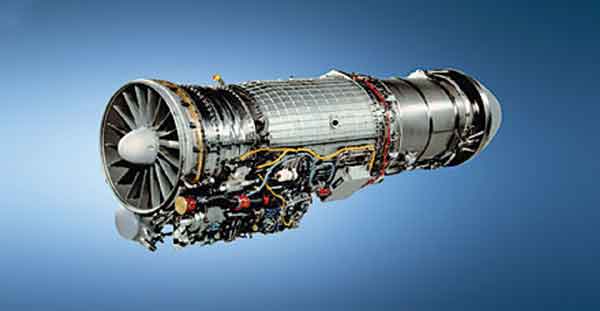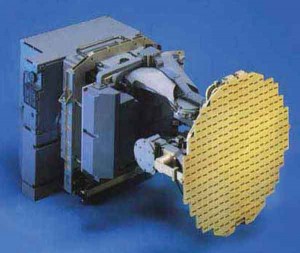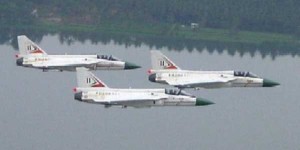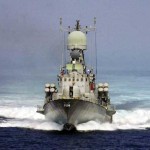The very fact that the first squadron of the Tejas Mk I is to be based at Sulur air base near Coimbatore in a non-threat environment, speaks volumes about the confidence of the IAF in the operational capability of the aircraft. Maintenance glitches are expected and close proximity to HAL in Bangalore which is to provide maintenance support would have driven the decision to form the squadron initially in Bangalore and subsequently base it at Sulur. Air Force pilots who have flown the Tejas are extremely appreciative of the handling characteristics of the aircraft but these are all highly qualified and experienced pilots. It is only after the Tejas is flown extensively by young rookie pilots in operational squadrons and over the full range of air-to-air and air-to-ground missions that the Tejas can be branded as a ‘weapon of war’.
There were reservations on the capabilities of the ADA and other agencies involved in the LCA project…
The Initial Operational Clearance (IOC) was granted to the Tejas on January 11, 2011. The Final Operational Clearance (FOC) can be granted only after the aircraft meets all stipulated operational parameters particularly carriage and release of armament, all-weather day and night capability, wake penetration and expansion of its flight envelop to the full design specifications which would take a few years.
Air Chief Marshal NAK Browne, Chief of the Air Staff, admitted that the IAF will have a serious shortfall in its operational strength in the next five years and the build up to 42 fighter squadrons will begin only by 2022. The Government is unlikely to approve the purchase of additional MMRCA over and above the 126 aircraft already sanctioned nor will it be willing to abandon the Tejas programme. The IAF may have to make do with the LCA to meet inventory shortfalls.
The Imponderables
Progress made so far in the Tejas project is a visible measure of the success of the Team in designing and building a fourth generation fighter aircraft from scratch against heavy odds. However, if the aircraft is to be inducted into operational service before the end of this decade, the IAF, the Indian Navy and ADA would have to address a number of issues as under:-
The IAF has ordered 40 Tejas Mk I and ADA reports of a projected requirement for the IAF of 83 Tejas Mk II with the GE F414 engine. But when will the Tejas Mk II fly?
HAL has a current capacity of producing eight to ten aircraft per year but this could be ramped up with a second production line the expenditure on which can be justified only if there is a firm order by the IAF. Will the IAF place a follow-on order beyond the initial for 40 Tejas Mk I aircraft?
The Tejas Mk I taking to the air is only one side of the coin. Product support of the fleet in peace time and also during high intensity deployments under simulated warlike conditions, demand ease of maintenance on the flight line. Will these be addressed before the FOC is obtained?
Composite structures save weight and reduce aircraft’s radar profile but composites have had issues with cracks and de-lamination. Will the Tejas hold up during extensive field use under the rigorous weather conditions and at high altitude bases? Only time will tell.
The IAF may have to make do with the LCA to meet inventory shortfalls…
In the near future, HAL will be involved in the concurrent production of the Tejas Mk I and Mk II, Dhruv helicopter, licensed production of the Rafale, a new basic trainer for the IAF, Fifth Generation Fighter Aircraft, the Multi-Role Transport Aircraft and the Intermediate Jet Trainer. Will the competing requirements of each one of these projects force HAL to relegate the LCA project to low priority particularly in view of the lukewarm approach of the customers to the Tejas Mk I?
ADA has contracted for 99 GE F414 engines for the Tejas Mk II and the first flight is expected in December 2014. Series production is expected to begin in 2016. Will this plan go as per schedule? General Electric Aviation is to supply the initial batch of ten engines but when will the balance be made in India through Transfer of Technology?
The naval version of the Tejas flew on April 28, 2012 nearly two years after roll-out. There are many unresolved issues on the naval Tejas including the heavier undercarriage and a comparatively under-powered engine. The initial test flight was carried out without retracting the undercarriage. The Defence Acquisition Council has sanctioned building only eight of the naval version of these planes. Besides, it is yet to be seen if the naval version of Tejas Mk I can operate from a carrier. It is understood that FOC will be considered only for the naval version of the Tejas Mk II and not for the Mk I. A team from the US Navy is providing assistance to make the Tejas capable of operating from a carrier. But when will this status be achieved?
Summary
The secondary objective of the LCA programme to boost the aviation industry in India has been achieved to a large extent but the Tejas must also meet the IAF’s need to fill a crucial gap in its combat potential due to the phasing out of the fleet of MiG-21 and MiG-27. The Tejas programme is poised at a critical stage and the IAF cannot afford any further delay in the programme. In February 2012, Defence Minister AK Antony urged HAL to realign its business processes and for strategic alliances and joint ventures so as to remain globally competitive. India’s rigid domestic-only policy has been relaxed so that the operational capabilities of the Tejas can be upgraded but more needs to be done to ensure that the Tejas Mk II is delivered on time. The success of the Tejas Mk I in the IAF will provide the impetus for the procurement of the Tejas Mk II.
If the Tejas Mk I does not fit the bill as a multi-role combat aircraft, the fact that it helped to develop the aviation industry in India will not cut ice with IAF pilots tasked to fly it into harm’s way. The key to the future of the Tejas Mk I and Tejas Mk II lies in obtaining the FOC at the earliest.
The LCA offers a viable solution for the IAF to bridge the gap in its combat power within the next five years but the situation as it stands is riddled with imponderables. Collaborative consultation and policy direction at the highest levels are essential if the Tejas is to be inducted in large numbers as the future fourth generation fighter in the IAF.








Indian Air Force officers get commisson from the outside companies for their pie, and DRDO is the white elephant they dont want to work even our PILOTS flying and crashing in the Death coffins.
Why this project not given to the private companies? and Allow 100% FDI in HAL, NAL, and DRDO, because scientist of these PSU are eating and sleeping and vote bank,they dont know how vunerable India is becoming to the PAK, CHINA and Terrorists and even Bangladesh and shrilanka also knew this.
The entire process was lop sided as DRDO wanted to have cushy life and promotions of its scientists yearly. Schedules are focused on personal growth ONLY. Private players were not serious as typically, even now, DRDO goes for L1 mindset rather than assessing suppliers properly. Passing the busk to suppliers is a classic escapist attitude even now. How can India develop and fly a safe LCA. Politicians want to declare LCA ready added comfort to DRDO heads anyway
It is a well established fact that HAL always arm twisted the IAF in accepting aircrafts built by it to justify its existence.
Over 4 decades of their existence failed in ANY of its Scientists developing any thing more than copying, that too with deficits.
But the biggest shame DRDO/HAL have brought on themselves is the denial, non acknowledgement of its failures and lies it perpetrated to harness monies that were for procurement of trainers. Due to their want to HIDE THEIR FAILURES, cropped up lies and lastly lead to no improvements nor re researching but figment of imagination flights and more lies.
What would have been fruitful to India by her procuring trainers was now wasted as no one wanted to talk of the failures, thus the re routing. The trainers were denied to the IAF, causing young men who would have been assets to the country to be murdered by their own. DRDO embezzled thru its brainwashing, lies and insistence that the LCA will be ready thus denying the basic rights of proper training to young men and women. Here of course the silence of the higher echelons of the IAF especially the chiefs also portrays that they could not stop the murders of young boys by asking them to fly without proper training
What India’s adversaries would want to achieve, DRDO/HAL achieved 2 folds and from within!
Since in inexperienced pilots were flying the Mig 21 without proper training due to DRDO’s lies, mass hysteria was created against the Mig 21, India’s backbone. IAF’s image took a big hit and youngsters refrained from joining the services.
So no trainers, less pilots, more deaths and bad image….all because DRDO and HAL wanted to save their jobs!
Not one Air Chief had it in him to tell the Govt that the IAF is not a suicidal kamakazee unit and he as chief CANNOT allow his young to fly to their deaths and also lose assets of the IAF due to DRDO’s insistence and fanciful LCA flights of imagination,that Either the Govt shud procure the trainers or disband d IAF
This paper is mostly “BS” of a negative kind.
Think for a moment; a very advanced country like US has not finished developing F-22 after 22 years. The pilots in F-22 are passing out without oxygen during flight. There are host of other problems which Americans do not discuss. Their F-35 after two decades is still a “paper tiger”.
Building your own fighter from scratch and against a backdrop of technical sanctions. A LCA test model was impounded by President Clinton for three years in New York from 1998 onwards. They did not like the indian nuclear test.
The local engine has been subjected to countless sanctions to prevent it from development. I wish Indians had been less nice and like Chinese stolen the technology anyway. But the indians did not. Sanctions were removed only when India bought the relavant GE engine.
In the backdrop of these so many road blocks, the good Air Commodore Menon should be proud that LCA got completed anyway.
It is a replacement of MIG-21; it is also a very powerfull, technically superior plane with all kinds of new technologies in it which cannot be found in Chinese copies or elsewhere.
In the end; think of experience the Indian plane builders have acquired.
Cheers
Hari Sud
nicely put up Mr Sud. We should not close our eyes to the efforts of so many technicians, engineers and pilots.
How does the IAF produce so many cry babies ? Quite an achievement indeed. Complaining about other agencies has been converted into a habit by these worthies. Those who have not helped at all in developing domestic capabilities get to comment on those who are giving their best !! These jokers should know that it is not without consequences. Time will show these dimwits their true position. Meanwhile the best they can do is shut up and mind their own business viz. import and imbibe (intoxicants, inducements etc)
another B!tchocrats ……..I don’t think pu$$y farts like you know what it is to put your lives on the line. get off your mother T!t put your ba!!s on the line and then talk.